






| European Hornet (Vespa crabro (Linnaeus, 1758)) |







|
|
Scientific name: Vespa crabro (Linnaeus, 1758) Common name: European Hornet French name: Frelon Order: Hymenoptera Family: Vespidae Wingspan : 18 to 25 mm for workers, 21 à 28 mm for males and up to 35 mm for the queen. Biotope: Forests, parks and gardens. You can also find the European Hornet near human buildings. Geographic area: Europe and Asia east to Japan and Korea. Introduced to Canada and to the United States of America. Observation period : Annual colonies from April to October. Mated queens hibernate in sheltered places. |
The European Hornet shows a yellow face with two large bean-shaped eyes and three small eye-spots on the upper side. The back side of the head and the front side of the thorax are red. The upper side of the thorax is a very dark red colour, almost black, with a pale red V-shaped mark. The front of the abdomen is red, then black with a yellow ring. The rear of the abdomen is bright yellow with some black marks. The European Hornets' nests, founded by queens which have hibernated, are made up with paper obtained by chewing wood fibres. They are located in cavities on trees or walls. They are continuously extended and can reach a size of 70cm at the time the colony disappears. The colony is first populated by workers. Males and future queens will hatch out in late summer. You can tell males apart with their longer antennae (13 elements instead of 12) showing a curved tip. European Hornets are attracted to light. They are not aggressive unless you get too close to the nest. On the contrary of a generally held opinion, European Hornets stings are not more dangerous than Wasp or Bee stings. The Asian Hornet (Vespa velutina) which is invading France, can be recognized by the black colour on the thorax and on the abdomen. The abdomen only shows two thin yellow lines and a slightly broader yellow stripe at the rear. |
| [To know more about the European Hornet] [Next picture] [Top] |
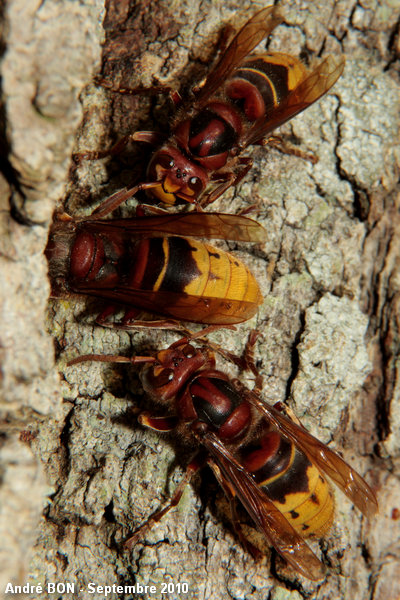
|
European Hornet first feed on insects and I often observe some of them hunting, but without being able to shoot pictures. Later in the year they change of food and I often observe some of them coming to pick sap on the trunk of Pedonculate Oaks. It is then rather easy to take pictures. |
| [To know more about the European Hornet] [Next picture] [Previous picture] [Top] |
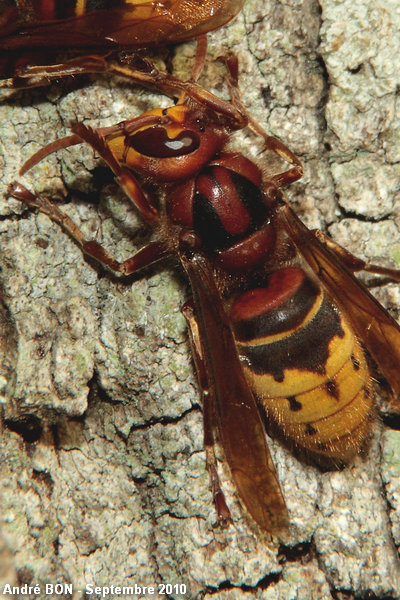
|
You just need to stay immobile next to the trunk of the Pedonculate Oak to watch them coming and going many times. The approach is rather easy as they are very busy by collecting food. |
| [To know more about the European Hornet] [Next picture] [Previous picture] [Top] |
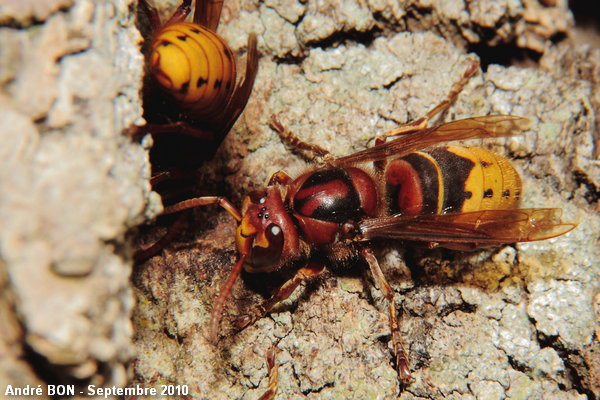
|
I think that I have found a nest in the hole of an old tree about fifty metres away from here. I have not been close to it as a precaution. |
| [To know more about the European Hornet] [Next picture] [Previous picture] [Top] |

|
The long antennae with a curved tip indicate a male. |
| [To know more about the European Hornet] [Next picture] [Previous picture] [Top] |
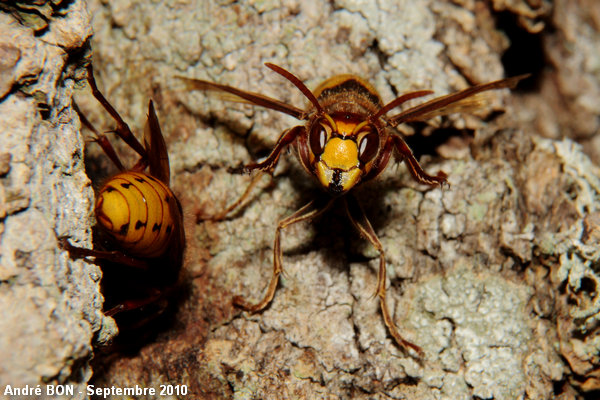
|
I have been startled when this European Hornet suddenly took off and flied towards me. I have quickly walked a few steps backwards after having shot the picture. |
| [To know more about the European Hornet] [Next picture] [Previous picture] [Top] |
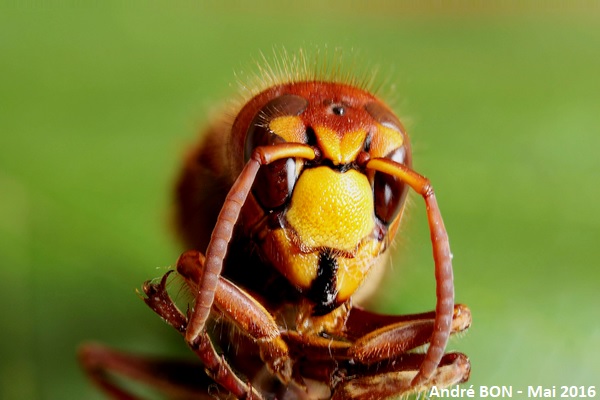
|
A few European Hornets come in and out of the undersides of the roof of my house. There must be a nest there, but small. Not being at all disturbed by this presence, I took no action to destroy the nest. This presence may explain why I found a dead Hornet in the bathroom tub. Here is a perfect subject for doing "photo stacking". I hooked the Hornet in front of a green background and, with the camera fixed on a mobile rail, I shot 67 photos, each one offset by a tenth of a millimetre in relation to the previous one. The CombineZP software allows you to combine the sharp parts of all these pictures to obtain a result with a large depth of field. I could have edited the result to remove the piece of dust on the face of the Hornet but I preferred to leave it as is. |
| [To know more about the European Hornet] [Previous picture] [Top] |
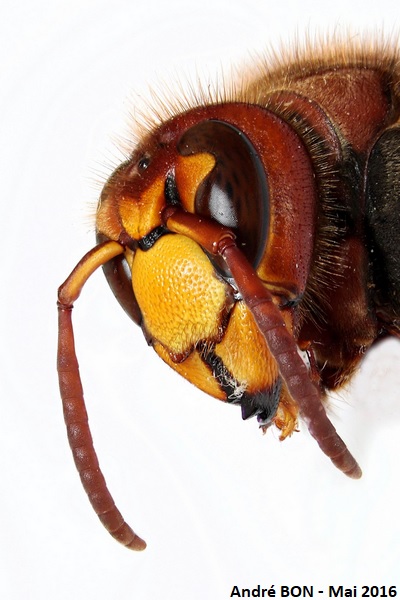
|
Another "photo stacking", on a white background this time, the result of the combination of 105 shots. |